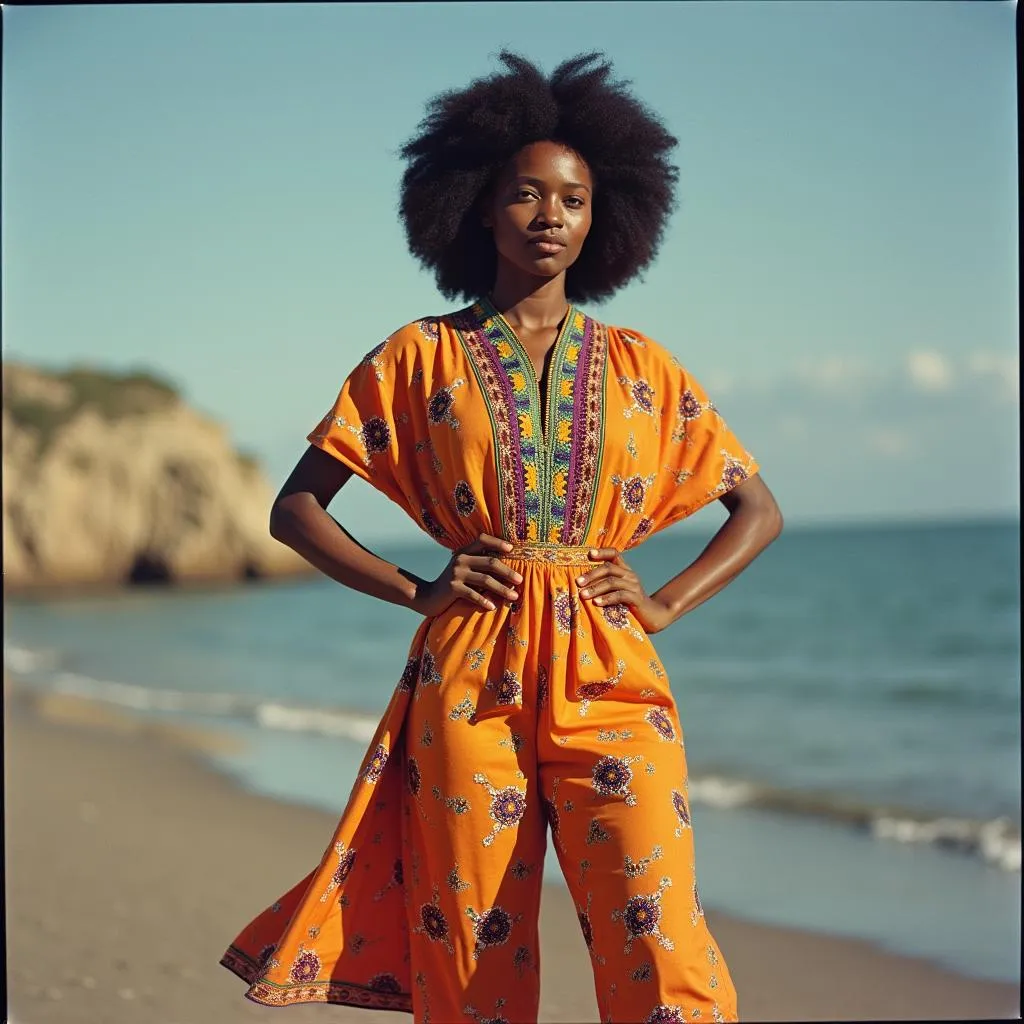1960s African American Fashion: A Revolutionary Style Statement
The 1960s was a decade of immense change, both socially and politically. For African Americans, it was a time of fighting for civil rights and equality. And their fashion choices reflected this fight, becoming a powerful tool for self-expression and a symbol of pride. 1960s African American Fashion was more than just clothes; it was a statement of identity, resistance, and a burgeoning sense of Black power.
The Rise of Afrocentrism in Fashion
The Civil Rights Movement ignited a newfound pride in African heritage, leading to a rejection of Eurocentric beauty standards and a celebration of Black identity. This Afrocentric shift was profoundly reflected in the fashion choices of the time.
One of the most iconic symbols of this era was the dashiki. This loose-fitting, brightly colored tunic, originating from West Africa, became a symbol of Black pride and heritage. Women also embraced traditional African prints and patterns in their clothing, headwraps, and jewelry. The natural hair movement gained momentum, with women ditching perms and straightening treatments to wear their afros with pride.

From the Pulpit to the Streets: The Influence of Black Leaders
The fashion choices of Black leaders like Martin Luther King Jr. and Malcolm X also had a significant impact. King’s sharp suits and Malcolm X’s tailored attire projected an image of power and respectability. Black women like Rosa Parks and Coretta Scott King, on the other hand, often opted for elegant dresses and hats that exuded grace and dignity. These leaders demonstrated that fashion could be a powerful tool for conveying a message and inspiring change.
Soulful Expression: Music and Fashion Intertwined
Music played a pivotal role in shaping 1960s fashion trends. Soulful singers like Aretha Franklin and Diana Ross became style icons, inspiring women to embrace bold colors, glamorous gowns, and statement jewelry. The rise of Motown brought about a more polished and sophisticated look, with sleek hairstyles and coordinated outfits.
On the other hand, the funk and soul sounds of James Brown and Sly and the Family Stone were reflected in a more eclectic and flamboyant style. Psychedelic patterns, bell-bottoms, and platform shoes became popular, mirroring the free-spirited and rebellious attitude of the music.

Black is Beautiful: Challenging Beauty Standards
The Black is Beautiful movement further challenged Eurocentric beauty standards and celebrated the unique features of Black people. Women like model Naomi Sims and actress Diahann Carroll broke barriers in the fashion industry, paving the way for future generations of Black models and designers.
The Legacy of 1960s African American Fashion
The impact of 1960s African American fashion continues to resonate today. From the resurgence of dashikis and African prints to the natural hair movement, the era’s bold and expressive style has left an indelible mark on contemporary fashion. Modern designers and stylists often draw inspiration from the creativity and ingenuity of that era, proving that fashion is not just about trends but also about history, culture, and identity.

Conclusion
1960s African American fashion was a revolutionary movement that went far beyond aesthetics. It was a powerful expression of Black pride, identity, and resistance. By embracing their heritage and challenging societal norms, African Americans used fashion as a tool for social change, paving the way for a more inclusive and diverse fashion landscape.
FAQs
-
What were some of the key influences on 1960s African American fashion?
The Civil Rights Movement, Black leaders, African heritage, and the music scene all played significant roles in shaping the fashion trends of the era. -
What are some iconic pieces of 1960s African American fashion?
The dashiki, afro hairstyles, colorful prints, platform shoes, and tailored suits are all iconic elements of 1960s African American fashion. -
How did 1960s African American fashion challenge beauty standards?
The Black is Beautiful movement promoted the beauty of natural Black features, challenging Eurocentric ideals and paving the way for greater diversity in the fashion industry. -
What is the legacy of 1960s African American fashion?
The era’s bold and expressive style continues to influence fashion today, from the resurgence of dashikis and African prints to the natural hair movement. -
Where can I learn more about 1960s African American fashion?
You can explore articles on african american dress styles and delve into the history of african american ladies hats. For a touch of cultural significance, you can also explore african american refrigerator magnets or the representation of Black beauty in african american barbie dolls.
You Might Also Be Interested In
- The Evolution of Black Hairstyles
- The Impact of Music on Fashion
- The History of the Civil Rights Movement
- African hair bun styles and their cultural significance.
Need more information? Contact us at +255768904061, email us at kaka.mag@gmail.com or visit us at Mbarali DC Mawindi, Kangaga, Tanzania. We have a 24/7 customer support team ready to assist you.

